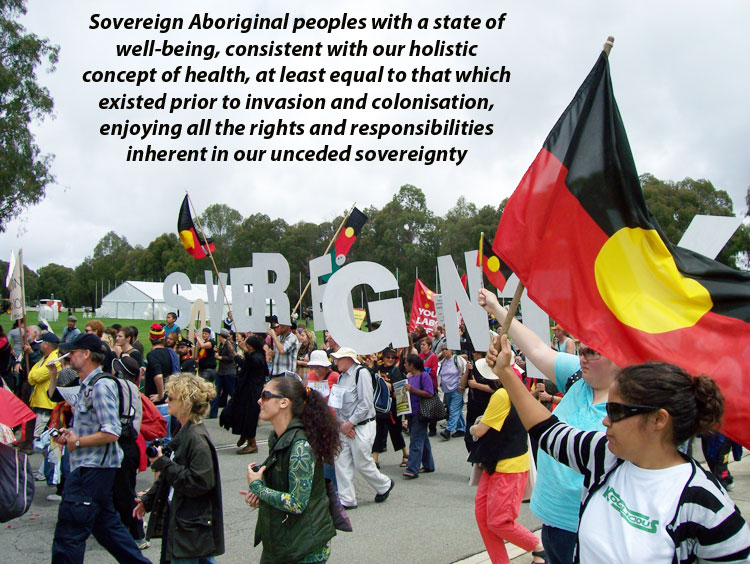The Portrayal of Aboriginal Health in Selected Australian Media
One of the factors impacting on the relationship of Indigenous Australians with mainstream society is the way in which the media portray Indigenous people and issues. There is growing research that suggests negative media portrayals in relation to Indigenous Australians perpetuates racist stereotypes among the wider population and that this type of racism has a major impact on the health of Indigenous Australians
Portrayal of Indigenous Health in Selected Australian Media Melissa J. Stoneham Curtin University
Aboriginal and Torres Strait Islanders (herein referred to as Indigenous Australian) comprise three percent of the Australian population (Australian Government, 2013). Distributed across the continent, Indigenous Australians are one of the most linguistically and culturally diverse populations in the world. It is commonly acknowledged that health outcomes for this group are lower than those of non-Indigenous Australians.
DOWNLOAD THE REPORT HERE : The Portrayal of Indigenous Health in Selected Australian Media Melissa J. Stoneham Curtin University
NACCHO Aboriginal health and racism: Marcia Langton the nature of my Q and A apology to Andrew Bolt
Photograph above Australia Day Canberra 2012 Colin Cowell
Although progress has been made in closing the gap, Indigenous Australians continue to experience a lower life expectancy with the current gap between Indigenous and non-Indigenous estimated at 11.5 years for males and 9.7 years for females (Australian Bureau of Statistics, 2010). Traditionally, the responsibility for tackling ill health has fallen to the health sector. While delivering health to those in need is one of the social determinants of health, the high burden of illness in many cases is due to the poor environmental conditions in which people are born, grow, live, work, and age.
These unequal conditions are, in turn, a product of bad politics, poor social policies and programs, and unfair economic arrangements (World Health Organisation, 2008).
According to Calma (2013), the poor health of Indigenous Australians is a result of a failure to realise the right to health for Indigenous Australians. Indigenous Australians have not had the same opportunities to be as healthy as other Australians or been able to take effective action to remedy long-standing and substantial health inequalities due to the relationship with mainstream society and services.
Making sense of the cultural health status of Australian Indigenous peoples requires an understanding of the relationship between the colonisation process, trauma, and its impact on health. The trauma, grief, pain, and anger that have resulted from the assimilation, segregation, and protectionist policies of the past are still present in the lives of Australian Indigenous people (Hearn & Wise, 2004).
A parallel consideration is the definition that Australian Indigenous peoples have of health. The Social and Emotional Wellbeing Framework, developed by the Australian Government, acknowledges that wellbeing is part of a holistic understanding of life, integrating the life-death-life cycle. It recognises this whole-of-life view of health is essential to achieve positive life outcomes for Australian Indigenous peoples (Department of Health and Ageing, 2004).
Although not recognised as a specific wellbeing factor within the above document, land has a powerful and persuasive underlying influence on Australian Indigenous wellbeing (Garnett & Sithole, 2007). The dispossession of Australian Indigenous people from their land and the subsequent loss of social, cultural, and financial capital has had a devastating effect on the health of Indigenous people worldwide (Hearn & Wise, 2004).
One of the factors impacting on the relationship of Indigenous Australians with mainstream society is the way in which the media portray Indigenous people and issues. There is growing research that suggests negative media portrayals in relation to Indigenous Australians perpetuates racist stereotypes among the wider population and that this type of racism has a major impact on the health of Indigenous Australians (Coffin, 2007; Larson, Gillies, Howard & Coffin, 2007; Sweet, 2009).
Similarly, in New Zealand, a number of mass media studies identified that Mãori health is often framed in the deficit model (Robson & Reid, 2001); the media are routinely reporting that the Mãori peoples are over-represented in national disease statistics (Rankine et al., 2008) and are persistently constructed as sicker and poorer than members of the dominant cultural group (Moewaka Barnes et al., 2005). Nairn, Pega, McCreanor, Rankine, and Barnes (2006) also looked at media representation of Māori peoples in New Zealand and highlighted a number of examples where the media perpetuated racist discourse by using language that framed stories in a particular way (e.g. Stoneham: Portrayal of Indigenous Health Published by Scholarship@Western, 2014 needy, passive objects of settler help), using only selective facts while leaving out crucial information, and excluding or conforming Mãori stories to fit a certain ideology.
This study aimed to examine the media portrayal of Indigenous Australians’ public health issues in selected media over a 12-month period. The objective was to determine the extent to which the portrayal was negative, positive, or neutral.


No comments yet.